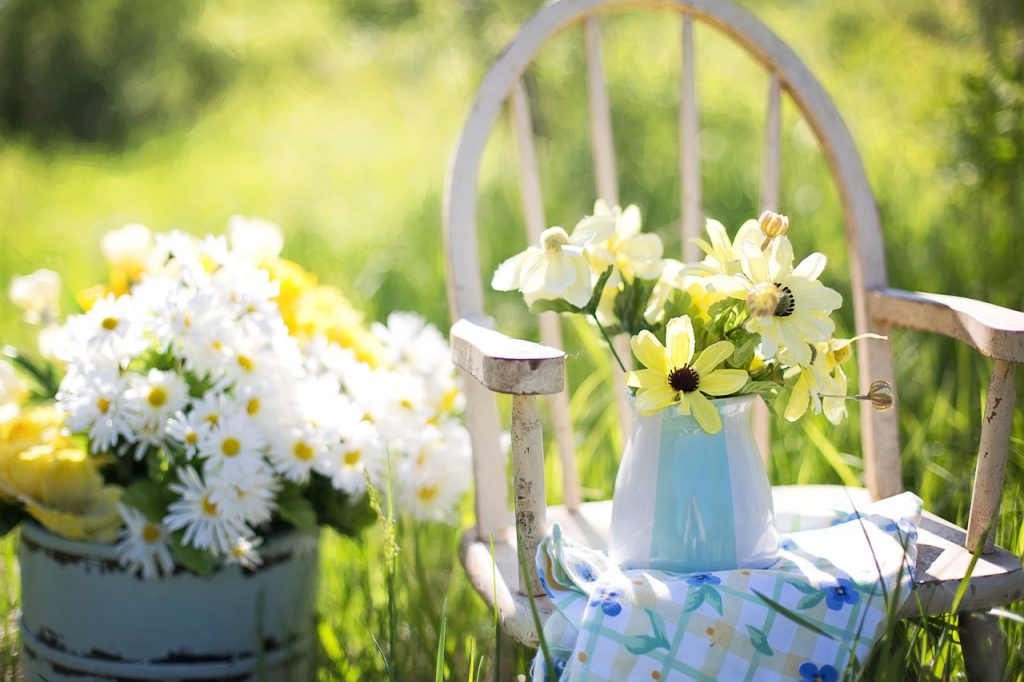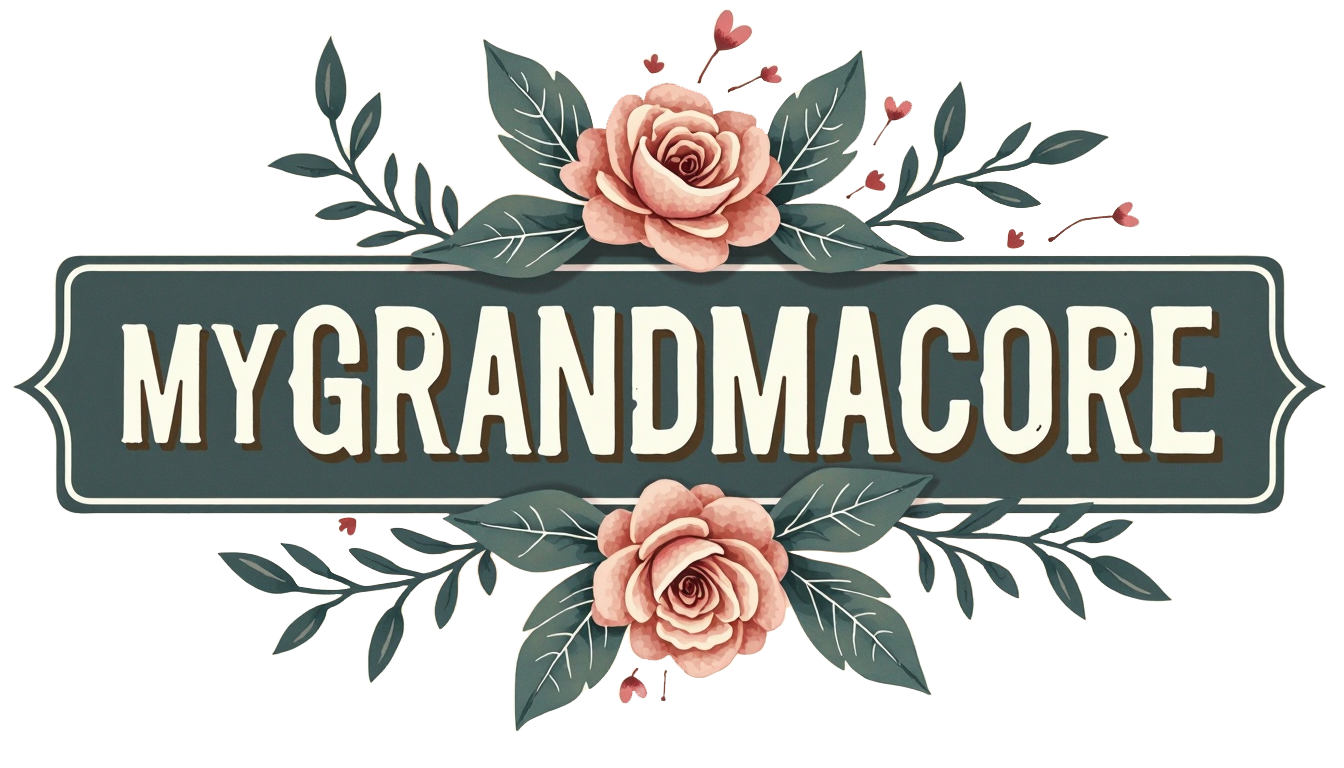Key Takeaways
- Authenticity Matters: GrandmaCore gardens thrive on genuine vintage items with history and character rather than mass-produced “vintage-style” products.
- Imperfection is Perfect: Embrace worn finishes, rust spots, and chipped paint—these signs of age add to the nostalgic charm.
- Mix and Match: Unlike modern garden design, GrandmaCore celebrates eclectic combinations of colors, materials, and styles collected over time.
- Functional Beauty: Choose items that serve a purpose while adding visual interest—watering cans, tool caddies, and plant containers can be both useful and decorative.
- Personal Connection: The most successful GrandmaCore gardens include elements with personal or family significance that tell your unique story.
- Seasonal Adaptation: Rotate accessories seasonally to create changing vignettes throughout the year, just as grandma would have done.
Do you miss the warm feeling of visiting grandma’s garden as a child? That sense of comfort surrounded by blooming flowers, chirping birds, and the subtle scent of herbs growing nearby? GrandmaCore gardening brings back these cherished memories through intentional design and carefully selected vintage accessories.
This guide will show you how to transform your outdoor space into a nostalgic summer retreat that feels like stepping back in time to grandma’s beloved garden.
What Makes a Garden “GrandmaCore”?
GrandmaCore draws inspiration from the gardens our grandmothers tended with love and care. This style celebrates imperfection, coziness, and the mix-and-match aesthetic that comes from collecting garden items over decades.
A true GrandmaCore garden isn’t perfectly manicured. Instead, it features:
- Abundant, slightly overgrown plantings
- Handmade or worn items with character and history
- Practical elements that serve a purpose
- Bright, cheerful colors mixed with weathered patinas
- Plants that engage all senses – fragrant, colorful, and textured
Jane Peters, a community garden organizer in Portland, describes it perfectly: “GrandmaCore isn’t about perfection – it’s about creating a space that feels lived-in and loved, just like grandma’s garden always did.”
Essential Vintage Accessories for Your Summer GrandmaCore Garden
The right accessories transform an ordinary garden into a GrandmaCore haven. Here are must-have vintage elements to consider:
1. Seating and Furniture
Every grandma’s garden needs places to sit and enjoy the surroundings. Look for:
- Metal patio sets from the 1950s-70s with chipped paint
- Wooden rocking chairs or benches with weathered finishes
- Small side tables for holding tea cups or gardening tools
- Porch swings hung from sturdy tree branches
I found my favorite garden bench at an estate sale for just $15. After a light cleaning (keeping the charming wear patterns), it became the perfect spot for morning coffee among my roses.
2. Decorative Elements
These items add personality and whimsy to your garden:
- Concrete birdbaths with moss growth
- Hand-painted garden gnomes or animal figurines
- Vintage metal signs with faded colors
- Old mirrors that reflect light and create visual interest
- Hanging wind chimes made from repurposed items

3. Practical Vintage Items
Functional pieces with nostalgic appeal:
- Galvanized metal watering cans
- Wooden-handled garden tools with patina
- Terracotta pots in various sizes (chips add character!)
- Old wooden ladders as plant stands
- Repurposed containers like tin cans or ceramic crocks
4. Lighting Elements
For evening garden enjoyment:
- Mason jars with tea lights or string lights
- Vintage lanterns with candles
- Old chandeliers rewired for outdoor use
- Solar lights in vintage-style fixtures
Color Palette for GrandmaCore Gardens
The right colors enhance the nostalgic feeling. Consider this palette:
| Color Category | Examples | Where to Use |
| Pastels | Mint green, powder blue, soft pink | Painted furniture, decorative items |
| Earth tones | Rust, terracotta, warm brown | Pots, natural elements |
| Faded brights | Washed-out red, sunny yellow | Accent pieces, flower choices |
| Whites & creams | Antique white, eggshell | Background elements, larger furniture |
These colors work together to create that worn-in, collected-over-time feel that’s essential to GrandmaCore design.
Where to Find Vintage Garden Accessories
Creating an authentic GrandmaCore garden doesn’t require spending a fortune. Here’s where to hunt for treasures:
- Estate sales and yard sales – Saturday mornings are prime time for finding genuine vintage garden items at reasonable prices
- Thrift stores and antique shops – Check regularly as inventory changes quickly
- Online marketplaces – Search for “vintage garden” on platforms like Facebook Marketplace, eBay, or Etsy
- Family members – Ask relatives if they have old garden items they no longer use
- Curbside finds – Keep an eye out for discarded items that could be upcycled
- Flea markets and farm auctions – Great sources for authentic rural garden items
Half the fun is in the hunt. Each piece you find has its own history, which adds to the story of your garden.
Step-by-Step GrandmaCore Garden Creation
Step 1: Plan Your Space
Start with a simple sketch of your garden area. Mark sunny and shady spots, existing plants you want to keep, and areas where you’d like to add seating or decorative elements.
Don’t aim for symmetry or perfect organization – GrandmaCore gardens feel like they evolved naturally over time.
Step 2: Select Plants with Nostalgic Appeal

Choose plants grandma would have grown:
- Flowers: Peonies, roses, hollyhocks, cosmos, zinnias, marigolds, dahlias
- Herbs: Lavender, rosemary, mint, chives, sage
- Vegetables: Tomatoes, green beans, cucumbers, rhubarb
- Shrubs: Hydrangeas, lilacs, forsythia, spirea
Plant in clusters rather than straight rows, and don’t be afraid to let them grow a little wild.
Step 3: Add Vintage Pathways and Structures
Consider adding:
- Stepping stones made from broken china pieces
- Gravel paths lined with collected rocks
- Arbors made from repurposed materials
- Simple trellises for climbing roses or clematis
Step 4: Place Your Vintage Accessories
Position larger items first (benches, tables), then add smaller decorative elements. Create vignettes – small groupings of items that tell a story.
For example, place a vintage chair next to a small table with an old teapot planted with succulents, and a stack of old gardening books nearby.

Step 5: Add Personal Touches
What made grandma’s garden special was how it reflected her personality. Add elements that tell your story:
- Family photos in weatherproof frames
- Handwritten plant markers
- Collections of meaningful items (teacups, miniatures, etc.)
- DIY crafts that complement the vintage aesthetic
Maintaining Your Vintage Garden Items
To keep your treasures looking appropriately aged (but not falling apart):
- Clean gently – Use soft brushes and mild soap; avoid pressure washing
- Protect wood – Apply linseed oil to wooden handles and furniture
- Prevent rust – Apply clear wax to metal items that shouldn’t rust further
- Winter storage – Bring ceramic and delicate items indoors during freeze-thaw cycles
- Embrace patina – Don’t restore everything to “like new” condition
Your GrandmaCore Garden Journey Starts Now
Creating a GrandmaCore garden is about honoring the past while making new memories. Start small with a few key vintage pieces, then build your collection over time.
Remember, the most authentic GrandmaCore gardens tell a story and evoke feelings of comfort and nostalgia. They’re not perfect – they’re perfectly loved.
What vintage garden treasure will you hunt for first? Start your GrandmaCore garden this weekend and recapture the magic of summers spent in grandma’s garden.
Now, take those seed catalogs out, visit a local estate sale, or check your own attic for forgotten treasures. Your GrandmaCore garden is waiting to bloom.
Frequently Asked Questions
Q: I don’t have any family heirlooms for my garden. How can I create an authentic GrandmaCore feel?
A: Family heirlooms are wonderful, but not essential. Focus on finding vintage items with character at thrift stores, estate sales, and flea markets. What makes a GrandmaCore garden authentic is the feeling it evokes, not necessarily the provenance of each item. Look for pieces that show signs of having been loved and used.
Q: How do I prevent my vintage metal items from rusting completely?
A: Some rust adds character, but too much can damage items beyond repair. For metal furniture and larger pieces, lightly sand any flaking rust, then apply a clear matte sealer designed for outdoor use. For decorative items, a coat of paste wax provides protection while maintaining the aged look. Keep particularly valuable pieces under covered areas or bring them inside during heavy rain.
Q: What plants work best if I don’t have much time for garden maintenance?
A: Choose perennial plants that were popular in grandmother’s era but are known for resilience: old-fashioned roses, day lilies, hostas, iris, and sedum. Herbs like rosemary, thyme, and lavender are both low-maintenance and authentic to the GrandmaCore aesthetic. Consider self-seeding annuals like calendula and nasturtiums that return year after year with minimal effort.
Q: How can I incorporate GrandmaCore elements into a small space like a balcony or patio?
A: Focus on container gardening with vintage vessels—old enamelware pots, wooden crates, or ceramic planters. A small vintage chair or stool, wall-mounted tools, and vertical elements like a repurposed ladder plant stand make excellent use of limited space. Window boxes with trailing flowers and herbs also capture the GrandmaCore essence without requiring much room.
Q: Is it ok to paint or refinish vintage garden items?
A: While natural aging is prized in GrandmaCore aesthetics, selective refinishing is perfectly acceptable, especially if it preserves an item for longer use. Choose paint colors that might have been used in grandma’s era—mint green, butter yellow, or sky blue. Apply paint lightly and consider distressing techniques to maintain a time-worn appearance rather than a fresh, new look.
Q: How do I balance GrandmaCore elements with modern garden needs?
A: Incorporate modern conveniences discreetly. For example, hide drip irrigation systems beneath mulch, use solar lights that resemble traditional lanterns, or tuck weather-resistant speakers inside vintage containers. Modern composite decking can be dressed up with vintage accessories to maintain the aesthetic while enjoying contemporary durability.
Q: What’s the difference between GrandmaCore and Cottagecore gardens?
A: While they share similarities, GrandmaCore specifically celebrates the gardening aesthetic of our grandmothers’ generation (typically 1940s-1970s), often including mid-century elements. Cottagecore tends toward a more idealized rural English garden style that spans broader historical periods. GrandmaCore typically incorporates more personal artifacts and practical elements, while Cottagecore may focus more on the overall romantic pastoral aesthetic.
